Hair Loss Solutions in Toronto
Hair transplants can be very effective and can also look extremely natural when done by an experienced doctor. There is a lot of misinformation out there about hair transplants and we want to help clear up fact from fiction so you can make an informed decision for yourself.

- Home
- Hair Loss Solutions
Hair Loss Treatment Toronto
Hair loss is a common concern for many men, and finding effective ways to stimulate hair growth can be a challenge. Whether you’re experiencing male pattern baldness or thinning hair, there are various treatments and remedies available to help slow down the process and promote hair regrowth. In this article, we will explore hair fall solutions and different strategies including medications, hair transplant procedures, laser treatments, lifestyle changes, and natural remedies that can potentially stimulate hair growth in men.
Understanding the Causes of Hair Loss
Before delving into the different ways to stimulate hair growth, it’s essential to understand the underlying causes of hair loss. Hair loss in men can be attributed to multiple factors, including genetics, medical conditions, medications, and stress.
Genetics and Family History
Genetics play a significant role in male pattern baldness, also known as androgenic alopecia. If your relatives have a history of hair loss, you are more likely to develop it as well. Male pattern baldness typically presents as a receding hairline or thinning patches on the crown of the head.
Medical Conditions and Medications
Certain medical conditions such as hormonal imbalances, autoimmune diseases, scalp infections, and hair-pulling disorders can contribute to hair loss. Additionally, several medications used to treat conditions like cancer, depression, heart disease, and arthritis may have hair loss as a potential side effect.
Stress
Chronic stress or significant life events can lead to temporary hair thinning. Managing stress through regular exercise, relaxation techniques, and getting enough sleep may help reduce hair loss caused by stress.
Medical Treatments for Hair Growth
When it comes to medical treatments for hair growth, there are several options available. These treatments range from over-the-counter (OTC) medications to prescription drugs.
Minoxidil (Rogaine)
Minoxidil, available as Rogaine, is an FDA-approved medication used to treat male pattern baldness. It is available in both liquid and foam forms and is applied to the scalp twice a day. Minoxidil works by stimulating hair growth and preventing further hair loss. Results may take several months to become noticeable, and ongoing use is necessary to maintain the benefits.
Finasteride (Propecia, Proscar)
Finasteride is an oral medication that requires a prescription from a doctor. It works by blocking the conversion of testosterone into dihydrotestosterone (DHT), a hormone that contributes to hair loss. Finasteride is typically taken daily, and it may take at least three months to see results. Continued use is necessary to maintain hair growth.
Combination Therapy
Some individuals may benefit from combining minoxidil and finasteride for a more comprehensive approach to female hair loss treatment. Higher concentrations of minoxidil may require a prescription, and specialized services can evaluate if this treatment option is suitable.
Hair Transplant Procedures
For individuals seeking a more permanent solution to hair loss, hair transplant procedures can be considered. The two most popular techniques are follicular unit transplantation (FUT) and follicular unit extraction (FUE).
Follicular Unit Transplantation (FUT)
FUT is a traditional method that involves removing a strip of skin from the back of the scalp, where hair is abundant. Hair follicles are then extracted from this strip and transplanted to the areas experiencing hair loss. FUT is a surgical procedure that may require multiple treatments and can involve some discomfort and the risk of scarring.
Follicular Unit Extraction (FUE)
FUE is a more advanced technique that involves extracting individual hair follicles directly from the scalp and transplanting them to the bald areas. This method offers a less invasive approach with minimal scarring. Another modified version of FUE called direct hair implantation (DHI) utilizes a specialized tool for the transplantation procedure.
Laser Treatments for Hair Growth
Laser treatments have gained popularity as a non-invasive option for stimulating hair growth. Low-level laser therapy (LLLT) is believed to reduce inflammation in hair follicles and promote regrowth in certain types of hair loss, such as alopecia areata. However, the effectiveness of laser treatment for hair fall solutions for women is still being researched, and more studies are needed to establish their benefits fully.
Lifestyle Changes to Promote Hair Growth
In addition to medical treatments and procedures, certain lifestyle changes can help promote hair growth and prevent further hair loss.
Quit Smoking
Smoking has been associated with hair loss in several studies. If you’re a smoker, quitting may help decrease hair loss and improve overall hair health.
Scalp Massage
Regular scalp massages can stimulate hair follicles and improve blood circulation to the scalp. This can potentially promote hair growth and increase hair thickness. You can perform scalp massages using your fingertips or utilize specialized scalp massaging devices.
Balanced Diet
Maintaining a balanced diet rich in essential vitamins and minerals can contribute to healthy hair growth. Include a variety of vegetables, fruits, whole grains, lean proteins, and healthy fats in your diet. Specific nutrients like iron, omega-3 fatty acids, and protein are particularly beneficial for hair health.
Stress Reduction
Chronic stress can contribute to hair loss, so finding effective stress reduction techniques is essential. Engage in activities such as regular exercise, listening to music, practicing yoga or meditation, and ensuring adequate sleep to help reduce stress levels.
Gentle Hair Care
Be gentle when brushing or styling your hair to minimize hair loss. Avoid tight hairstyles that pull on the hair, and limit the use of heat styling tools and harsh chemicals. If you choose to bleach or chemically treat your hair, seek assistance from a professional to minimize damage.
Hydration
Drinking plenty of water is essential for overall health, including hair health. Staying hydrated helps keep the scalp and hair follicles nourished, promoting healthy hair growth.
Natural Hair Loss Treatment for Hair Growth
Several natural hair loss treatments and remedies have been suggested to promote hair growth, although scientific evidence supporting their effectiveness is limited. It’s important to note that results may vary, and these remedies may not work for everyone.
Essential Oils
Certain essential oils, such as peppermint oil and rosemary oil, have shown potential in promoting hair growth. Peppermint oil may stimulate hair follicles, while rosemary oil has been traditionally used to improve blood circulation in the scalp. Other oils like coconut oil, castor oil, and olive oil are also commonly recommended, although their benefits for hair growth are still being researched.
Saw Palmetto
Saw palmetto is a plant extract that may help with hair growth by blocking the production of DHT, a hormone linked to hair loss. While research on its effectiveness is limited, it is considered safe with minimal side effects.
Biotin
Biotin, a Bvitamin found naturally in several foods, has been associated with hair health. Supplementing with biotin may help slow down hair loss, particularly in individuals with biotin deficiency. However, its effectiveness in healthy individuals without a deficiency is still under debate.
Onion Juice
Some studies suggest that topical application of onion juice may promote solutions for hair regrowth, particularly in individuals with patchy hair loss conditions like alopecia areata. More research is needed to determine its effectiveness in other types of hair loss.
Ayurvedic Remedies
Certain Ayurvedic herbs like bhringraj (Eclipta alba) and Chinese hibiscus have been traditionally used to support hair growth. While animal studies have shown promising results, more research is required to establish their effectiveness in humans.
Hair Loss Treatment Toronto
Hair loss is a common concern for many men, and finding effective ways to stimulate hair growth can be a challenge. Whether you’re experiencing male pattern baldness or thinning hair, there are various treatments and remedies available to help slow down the process and promote hair regrowth. In this article, we will explore hair fall solutions and different strategies including medications, hair transplant procedures, laser treatments, lifestyle changes, and natural remedies that can potentially stimulate hair growth in men.

Surgical Hair Fall Solution
Hair transplants can be very effective and can also look extremely natural when done by an experienced doctor. There is a lot of misinformation out there about surgical hair transplants and we want to help clear up facts from fiction so you can make an informed decision for yourself.
Non-Surgical Hair Loss Solutions
Not everyone is either ready or eligible for a hair transplant surgery. The good news is there are many more non-surgical options for hair restoration than ever before.


Cell Banking
The Toronto Hair Transplant Surgeons and Acorn Bio Labs have partnered to offer you cell banking! Contact us to purchase our kit.
FAQs
What are the most effective hair loss solutions for men?
Hair loss solutions for men encompass a range of treatments and approaches. These can include topical treatments like minoxidil (Rogaine), oral medications such as finasteride (Propecia), and advanced procedures like hair transplantation or hair cloning transplants. Consulting a reputable hair loss treatment clinic is advisable to explore personalized solutions based on individual needs and conditions.
What is a hair cloning transplant and how does it help with hair loss replacement?
Hair cloning transplant involves replicating hair follicles to transplant them into areas affected by hair loss. This cutting-edge procedure aims to offer a permanent solution for hair loss replacement by generating new follicles and stimulating natural hair growth.
Are there any proven solutions for promoting hair regrowth?
Yes, there are various solutions for hair regrowth. These may include topical treatments, oral medications, PRP (Platelet-Rich Plasma) therapy, and hair transplant procedures. The effectiveness of these solutions can vary, so it’s advisable to consult a professional for personalized advice.
How can I find an effective hair loss problem solution?
Finding the right solution for hair loss problems often begins with consulting professionals at a hair loss treatment clinic. These clinics offer various solutions, from non-surgical treatments to hair transplantation procedures. Hair loss replacement techniques, including hair cloning transplants, are among the advanced methods available to address this issue.
What options are available as a hairline receding solution?
Hairline recession can be managed through various methods. Some solutions include medications like minoxidil or finasteride, low-level laser therapy, PRP (Platelet-Rich Plasma) injections, and surgical procedures like hair transplants or microblading. Consulting with a specialist can help determine the most suitable solution based on individual needs and the extent of hairline recession.


